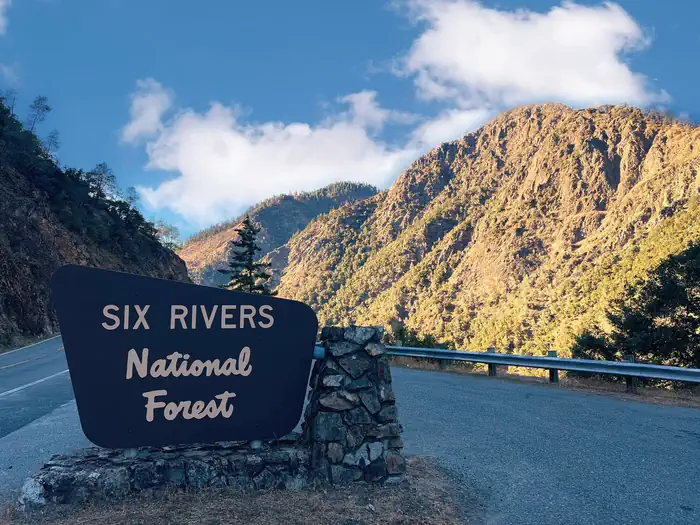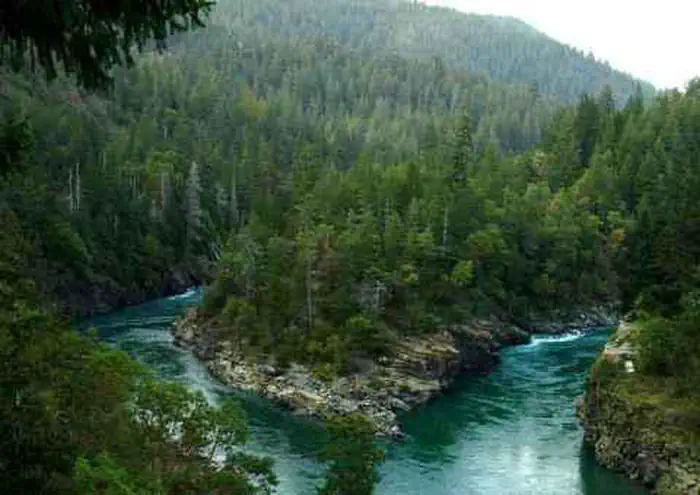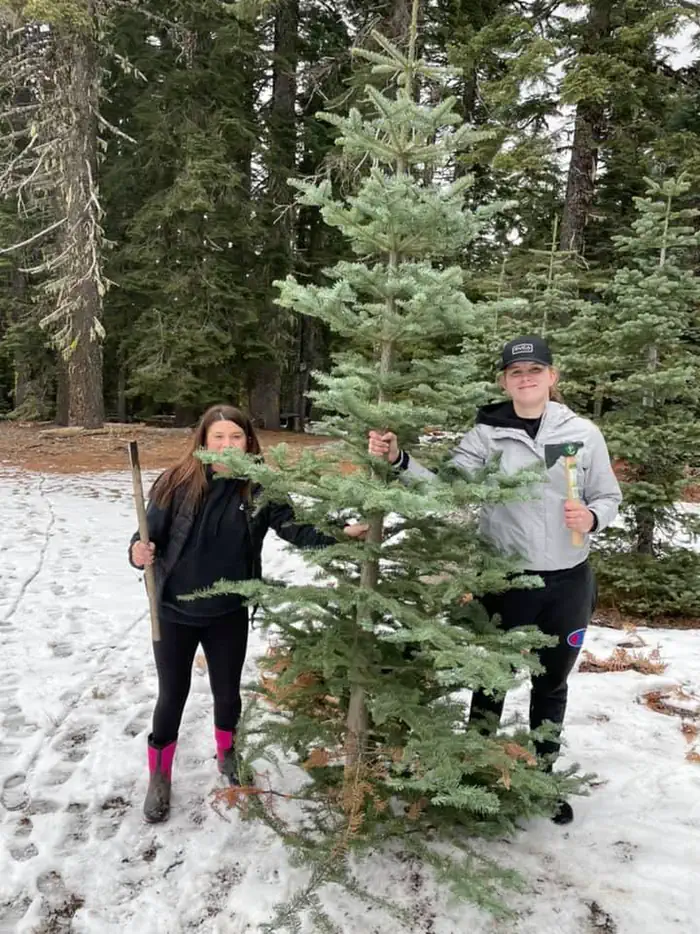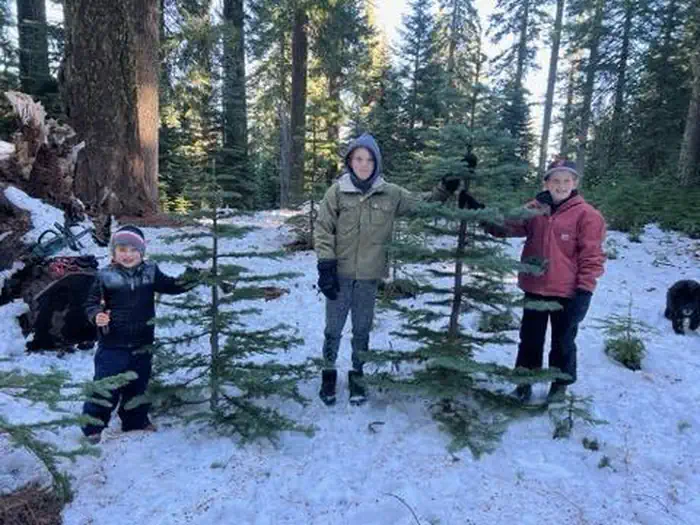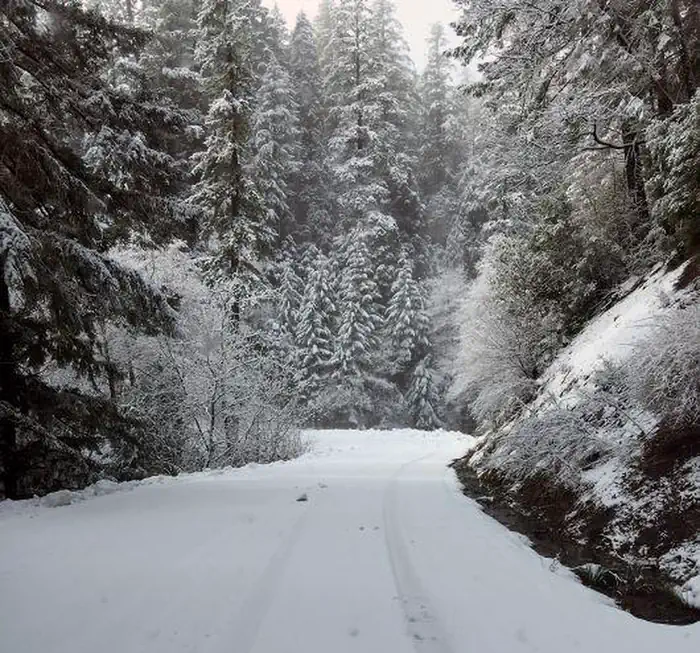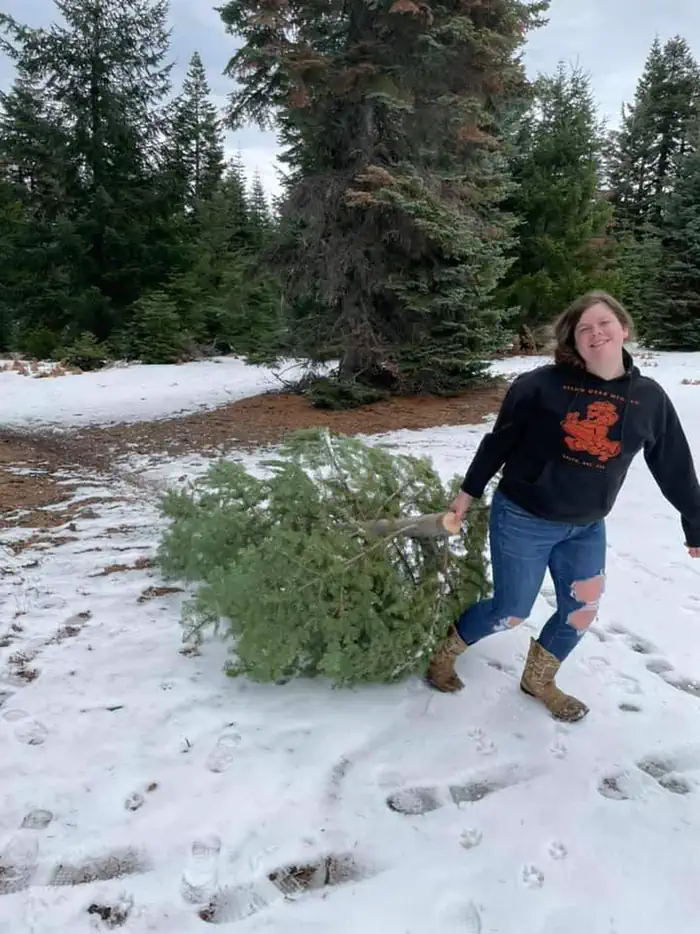Six Rivers National Forest Christmas Tree Permit
This permit allows you to cut a Christmas Tree within designated areas of the Six Rivers National Forest! Lifelong memories are built during these special times and we are happy to help with any information gathering you'll need to make this trip a safe and enjoyable one.
Please be sure to read and agree to all the tips and guidelines when selecting your tree.
A permit must be purchased online for the tree you are going to cut. The permit is printed at home following purchase and carried with you as you venture to find your tree. Permits must be visible in the windshield of your vehicle during transporting. There will be no permits sold at Six Rivers National Forest offices this season.
There is a limit of two trees per family/household permit. The cost for 2023 is $10 per tree + a $2.50 reservation fee.
Fourth graders with a valid “Every Kid Outdoors” Voucher or Pass are entitled to one free Christmas Tree (a $2.50 reservation fee will be applied). For more information on the program and to obtain a pass, please visit: https://everykidoutdoors.gov/index.htm
Additional information and maps may be obtained on the Forest website and by contacting the District offices.
Need to Know
Selecting Your Tree
Stump height: 12 inches maximum
Stump diameter: 6 inches maximum
Take the whole tree. Do not remove the top of the tree; cut down the entire tree
If snow is on the ground, remove it from around the stump so you can accurately measure the stump and tree height.
Where to Cut Your Tree
For designated cutting areas, please contact the Ranger District office location where you plan to cut. Also, check the Forest website for any updated information on Forest closures.
Please follow all signs for any road closures, permitted access, active timber sales, and designated cutting areas.
Do not cut on private land, in wilderness areas, plantations, botanical areas, day use areas, designated campgrounds, or existing tree plantations.
Do not cut in active timber sales or areas that have been planted with new trees.
Do not cut trees within 100 feet of paved road and 50 feet from dirt roads.
Please check Forest updates ahead of time to see of any potential fire happenings or closures.
Planning Your Trip
Helpful Cutting Tips
Tools you might want to consider bringing with you include a measuring tape to ensure you select a tree that fits in your home; handsaw to cut your tree; gloves to protect your hands; boots to protect your feet; a tarp to sit on and/or to move your tree once it's cut; and rope or straps to secure your tree to your vehicle.
Choose a tree from a dense forested area, which will give the remaining trees more space to grow. Cut the leftover branches from the stump and scatter them.
Carry your tree carefully out of the woods. Dragging the tree will rub off needles and bark.
If the tree is too big to transport inside of your vehicle, wrap it in canvas to prevent wind damage.
Once home, cut the bottom of the trunk off and place the freshly cut trunk in a bucket of water. Replenish water.
If storing your tree outside for a few days before putting it in the house, keep it in an area protected from the wind, such as the north or east side of your house or under a shaded tree.
How to Plan Your Trip
Please check with the District office ahead of time to see what notifications, warnings, road closures, or any Forest closures might be in effect.
Before you leave home, be sure to measure the space where you plan to place the tree in your home (height and width), and measure the space in your vehicle where you will be transporting the tree.
Cell service may be spotty or unavailable. Be sure someone knows where you are and when to expect you back. Check the latest weather conditions before you leave on your trip. Bring a map with you. Don’t rely on GPS because it may not be up-to-date with forest service roads. Dress warmly and take extra dry clothes. Expect winter weather, including cold temperatures, snow and winds. Bring plenty of food and water with you as well as an overnight survival kit in case you become stranded. Start your day early. Be sure to find your tree and leave the woods before dark.
Roads may not be plowed. Carry tire chains, shovel(s) and a tow chain. Be sure your vehicle has a full tank of gas. Bring a spare key and give it to someone else in your party. Don’t get locked out of your car! Park in areas so that traffic can get by safely, and do not block gates.
